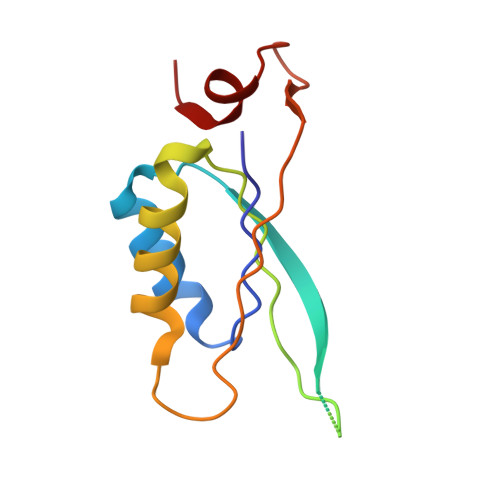Structural Basis and Target-Specific Modulation of Adp Sensing by the Synechococcus Elongatus Pii Signaling Protein.
Zeth, K., Fokina, O., Forchhammer, K.(2014) J Biol Chem 289: 8960
- PubMed: 24519945
- DOI: https://doi.org/10.1074/jbc.M113.536557
- Primary Citation of Related Structures:
4C3K, 4C3L, 4C3M - PubMed Abstract:
PII signaling proteins comprise one of the most versatile signaling devices in nature and have a highly conserved structure. In cyanobacteria, PipX and N-acetyl-L-glutamate kinase are receptors of PII signaling, and these interactions are modulated by ADP, ATP, and 2-oxoglutarate. These effector molecules bind interdependently to three anti-cooperative binding sites on the trimeric PII protein and thereby affect its structure. Here we used the PII protein from Synechococcus elongatus PCC 7942 to reveal the structural basis of anti-cooperative ADP binding. Furthermore, we clarified the mutual influence of PII-receptor interaction and sensing of the ATP/ADP ratio. The crystal structures of two forms of trimeric PII, one with one ADP bound and the other with all three ADP-binding sites occupied, revealed significant differences in the ADP binding mode: at one site (S1) ADP is tightly bound through side-chain and main-chain interactions, whereas at the other two sites (S2 and S3) the ADP molecules are only bound by main-chain interactions. In the presence of the PII-receptor PipX, the affinity of ADP to the first binding site S1 strongly increases, whereas the affinity for ATP decreases due to PipX favoring the S1 conformation of PII-ADP. In consequence, the PII-PipX interaction is highly sensitive to subtle fluctuations in the ATP/ADP ratio. By contrast, the PII-N-acetyl-L-glutamate kinase interaction, which is negatively affected by ADP, is insensitive to these fluctuations. Modulation of the metabolite-sensing properties of PII by its receptors allows PII to differentially perceive signals in a target-specific manner and to perform multitasking signal transduction.
Organizational Affiliation:
From the Max Planck Institute for Developmental Biology, Department of Protein Evolution, Spemannstrasse 35, 72076 Tübingen, Germany and.
















